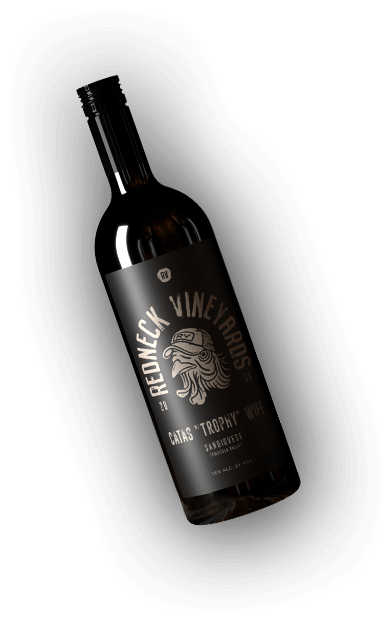Wine, Wine Pairing
Wine Terms New Wine Drinkers Should Know
One of the reasons the wine world can seem a bit intimidating is that many wine terms thrown around are unfamiliar to novices. Wine terminology for beginners can seem like a whole new language, but don’t let that put you off booking your first wine tasting or delving head-first into the wonderful world of wine. You don’t need to know the meaning of every wine term before you start learning about wine — it will all come naturally as part of the process. Any decent host, sommelier, or wine seller should be glad to help you learn. However, it is a good idea to brush up on some wine terminology for beginners. Doing so will help you notice — and learn to appreciate — the nuances of different wines.
Aeration
Aeration means exposing the wine to air to allow it to absorb oxygen. This helps release the aroma and open up the wine’s flavor. It is also what someone means when they say, “let the wine breathe.” It can be done by swirling wine in the glass or decanting wine (transferring it from the bottle to an open-topped vessel).
Acidity
One of wine’s basic characteristics is also called crispness or sharpness. This is an important wine term for beginners.
Alcohol by Volume (ABV)
ABV is the amount of ethanol in a wine expressed as a percentage. The range for unfortified wine is around 5.5% to 16%, whereas 15.5% to 25% is the ABV range for fortified wines. Wineries are legally required to state a wine’s alcohol content on its label.
Appellation
The designated geographic area where wine grapes are grown, which has distinctive soil and climate conditions. In the United States, appellations are legally regulated as American Viticultural Areas (AVAs).
Biodynamic Wine
This is a wine produced within a system of farming that takes a sustainable, holistic approach. Makers use no synthetic chemicals or additives to make the wine.
Body
Body is how heavy, thick, or full a wine feels on your palate; it refers to the weight and feel of the wine and is key wine terminology for beginners. The body of a wine is generally described as light, medium, or full-bodied. Most often, rich wines are higher in alcohol.
Bordeaux
An area in Southwest France, as well as any wine produced in the region. Bordeaux wines can be red or white, although reds are the most common and well-known.
Bottle Aging
The process of aging wines in the bottle before opening. Some wines age for two to three years, while others age for decades. Bottle aging only applies to a small percentage of wines.
Brix
A unit of measurement for the sugar content of wine grapes, indicating their ripeness at harvest. Winemakers use Brix to calculate the potential alcohol content of wine before it is produced.
Chardonnay
Chardonnay is a variety of grape used to produce a popular white wine of the same name. It originated in France but is now grown in winemaking regions worldwide.
Want to sample this type of wine? We suggest Sweet Oaks 2017 Chardonnay.
Decanting
Complementing the aeration process, decanting means pouring wine from one container to another. Most commonly, the pour goes from a wine bottle to a decanter. This process also separates wine from any sediment.
Dry
Dry is a wine term meaning the opposite of sweet. When residual sugar has been fermented, dry white or red wines result.
Earthy
Earthy wines smell of the earth or soil, reminiscent of the forest floor, mushrooms, or truffles. In small amounts, earthiness is a desirable attribute common in older wines, especially Pinot Noir.
Fermentation
This is the process by which yeast converts grape sugars into alcohol, turning grape juice into wine.
Fortified Wine
A wine with spirits, typically brandy, is added to it to increase the alcohol content. Examples of fortified wine include Port, sherry, and Marsala.
Ice Wine
Ice wines are sweet, low-alcohol wines made from frozen grapes. They are often enjoyed with dessert.
Legs
Wine legs are the streaks of wine that form on the sides of a glass after you swirl the wine inside it. Looking for wine legs, also known as wine tears, is a way to visually assess the wine’s viscosity.
Microclimate
The climate conditions present in a specific, localized area. This area could be a region or even a single vineyard. Microclimate affects the characteristics of wines grown within the area.
Mouthfeel
Mouthfeel defines the sensations you experience in your mouth when drinking wine (or eating food). For example, a wine may have a sharp, smooth, or velvety mouthfeel. This is valuable wine terminology for beginners as it reminds you to appreciate wine with all your senses.
New Oak
Barrels are often reused when aging wine. New oak refers to a barrel used for the first time. The flavors imparted by oak are considerably more robust when using newer oak compared to aged oak barrels.
Nose
Nose is the scent of a wine, also known as aroma or bouquet.
Nutty
Nutty wines are oxidized during fermentation or in the bottle, creating a nut-like scent. It is often a flaw but can be intentional when balanced with an oaky flavor.
Pinot
Pinot is a family of wine grapes that includes the white grapes pinot blanc, pinot gris or grigio, and red grape pinot noir. Wines made with these grapes are also called pinot.
Want to sample some pinot wines? Sweet Oaks produces a Pinot Grigio and a Pinot Noir.
Sommelier
A sommelier is a wine expert. Sommeliers take courses and exams to establish knowledge, tasting, and evaluation skills and become certified.
Sulfites
Sulfites refer to sulfur dioxide, a preservative that prevents the unwanted growth of bacteria and yeast. Sulfites can be naturally present in wine grapes or added by the winemaker.
Table Wine
Table wines are those intended for consumption during a meal. They are usually inexpensive and fall between 7% to 14% ABV.
In the European Union, table wine is a regulated term used to designate the lowest-quality wine.
Tannins
Tannins are natural compounds found in the skins of wine grapes. They yield dry, bitter, and sometimes astringent flavor notes and give red and rosé wines their color. The presence of tannins is generally considered a positive trait, but some wine drinkers prefer low-tannin wines.
Terroir
The natural environment where a specific wine is produced, taking into account the topography, soil, and climate, all of which influence the final product.
Varietal
A term for a wine made from a single grape variety. Examples include chardonnay, merlot, and zinfandel.
Wine Pairing
A wine pairing combines certain foods with specific wines to create the best eating and drinking experience. For example, cheese and wine are a classic yet complex pairing.
Yeast
Yeast is a natural fungus that eats sugar, transforming grape juice into wine during fermentation.
Ready To Put those Wine Terms to Good Use?
You could memorize all this wine terminology for beginners, but the only way for it all to start making sense is to taste more wine! Order a few different bottles and host your own wine tasting, spend some time exploring the menu at your local wine bar, or book a tasting session at a winery. Knowing these basic wine terms will help you enjoy the experience even more.



